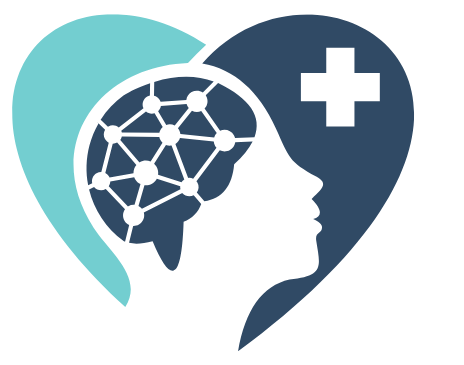Cognitive therapy, developed by Dr. Aaron Beck, focuses on the relationship between our thoughts and moods. Beck realized from his work that many of his patients with depression expressed irrational thoughts about themselves and their lives, and this realization led him to discover a list of problematic thinking patterns that he called “cognitive distortions.” His theories have been updated to address additional relationships between our behaviors and our moods, and the resulting treatment is called Cognitive Behavioral Therapy (CBT), which is one of the most effective treatments for depression and anxiety. Every CBT program includes strategies for challenging distorted thoughts, since they are so common. Following are short descriptions of the cognitive distortions that Beck identified.
Mental Filtering. This pattern of thinking includes a negative bias where we filter out positive aspects of our lives. For example, imagine waking up and discovering that it’s raining outside. You think to yourself, “Oh great, what a lousy day. It’s dark and dreary and cold. I hate rainy days, I’m just going to stay in bed.” This way of thinking filters our positive aspects of a rainy day, including the comforting sound of rain pattering on the window, the fresh feeling of a world washed clean, vibrant trees and flora in the world that have been hydrated so they can grow, etc. When our minds no longer see the positive aspects of our experiences, we are likely falling into the pattern of mental filtering.
Personalization. This pattern of thinking assumes a personal connection with things that happen in our life. If our friend is in a bad mood and cancels plans last minute, we might assume it’s because we did something wrong, or because they don’t like us anymore. When we assume a direct connection between someone else’s behavior and ourselves, without any supporting evidence, this can cause anxiety, fear, guilt, and other negative emotions. To challenge this personalization, we could accept other possible explanations for our friend’s behavior. Maybe they don’t feel well, or maybe they forgot about another obligation, etc.
Minimization. This pattern of thinking reduces the importance of positive qualities and events. If someone gives us a compliment, for instance, we might minimize the significance of our skills or strengths by attributing them to luck, a happy accident, or we will give credit to someone else. This minimization however distorts our perception of ourselves and of reality, and it can impact our self-esteem. Therefore, it’s important to happily accept and celebrate evidence of our positive qualities, strengths, and accomplishments.
Maximization. This pattern of thinking increases the importance of negative qualities and events. For example, if someone explains that they don’t want to date us anymore, we might convince ourselves that this is a tragedy in our lives, one that means we will never be loved or happy in a relationship. In fact, catastrophizing is one of the most common thought patterns for people with anxiety disorders. To prevent triggering our body’s fight-flight-freeze response, it’s important to rationally assess all factual evidence that can support or refute the likelihood of any feared scenario.
Black or White. This pattern of thinking leads us to believe that there are only two possibilities that can be considered. For instance, black and white thinking could convince us that we are either a winner or a loser. This of course is not rational, since sometimes in winning we actually lose something important, and sometimes in losing we gain something more valuable. In other words, rational thinking should include shades of grey.
Overgeneralizing. This pattern of thinking assumes broad truth based on very little evidence. If we ask two people out for a cup of coffee and both people decline, we might overgeneralize and assume that we “suck at making friends.” Rational thinking can consider all of our past experiences, including times we succeeded at making friends, and times when we did not. Then we can discover lessons from specific behavior instead of blaming our entire personality.
Jumping to Conclusions. This pattern of thinking often includes mind reading, where we assume we know what someone really meant, or what they are really feeling. For example, if you receive an ambiguous text from a friend, you might fill-in-the-lines by assuming their words have subtle meaning, when they really don’t. It’s best to take people at their word and ask for clarification when there’s uncertainty.
“Should” Statements. This pattern of thinking restricts our view of ourselves and of our behavior according to the expectations placed on us by ourselves or other people. We might feel sad, but tell ourselves “I should be happy.” Or, we drown ourselves with other pressures according to what we need to do, ought to do, must do. This is a very common thinking pattern with anxiety disorders. To avoid this thinking trap, remember that you are always in charge of yourself, you have the right to feel however you do, and the right to direct yourself however you choose to in your life.
Emotional Reasoning. This pattern of thinking assumes that reality agrees with how we feel. We might feel like we are a bad parent or partner, so we become convinced we are a bad parent or partner without considering evidence. I find that emotional reasoning is one of the most common distorted thoughts for people with depression and trauma especially, because these conditions include intense negative affect and shame. Just because we feel that something is true, does not meant that it is true.
Magical Thinking. This pattern of thinking assumes a relationship between events that does not actually exist. For instance, someone might believe that if they are a good person, this means that bad things should not happen to them. It would be a wonderful world if this were true, but when we rationally assess reality we discover that this emotional “law” does not hold true. There is no real relationship, unfortunately, between being a good person and experiencing suffering in life. Accepting reality as it is can help us let-go of anger and rage.
Most of us will experience some, if not all, of these distorted ways of thinking. The best way to handle these unhealthy ways of thinking are to first recognize the distorted thought when it arises in our mind, identify the type of thought distortion, and then challenge the thought by looking for evidence to support or challenge it. It can also help to ask yourself, “What would I say to my best friend if they shared this thought?” or to solicit real feedback from trusted family or friends. Of course, cognitive behavioral therapy can help you with the process of identifying and overcoming distorted thinking patterns. To find a therapist near you, please visit PsychologyToday.com or BetterHelp.com.

